Large indoor plants

People are always attracted by wildlife, and even the busiest person, immersed in his own affairs, even for a moment, will linger near the green miracle and smile. That is why large indoor plants are more relevant today than ever. About what they are, and how to choose the right giant in the house, and will be discussed in our article.


Advantages and disadvantages
For many years, window sills were the only place in the house where it was possible to place indoor flowers - only there bright sunlight fell on them. Any movement into the depths of the apartment immediately threatened the death of the flower from lack of lighting. That is why our mothers and grandmothers acquired medium-sized green plants that could be placed on a rather narrow window sill. Large-sized flowers were grown mainly in schools, art houses, libraries, public canteens, as well as research institutes.
However, in recent decades, the situation has changed radically. Apartments with spacious halls have appeared, cottages and private houses are being built. All this led to a surge in interest in winter greenhouses and an imminent demand for tall houseplants.
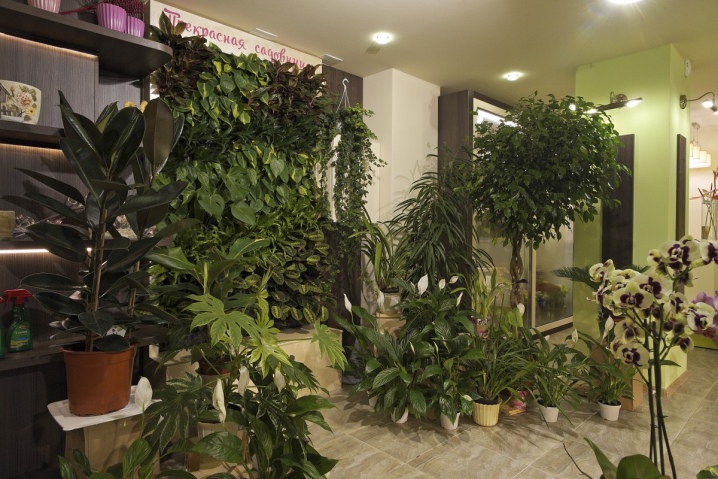
Indeed, these representatives of the domestic flora have many advantages.
- A large-sized plant can favorably set off one or another piece of home decor, or, on the contrary, distract attention and thereby hide some defects in the interior decoration.
- Such cultures are rightfully considered a find of designers, since they allow you to implement a variety of solutions for the arrangement of living quarters.
- Large flowers look harmonious in spacious rooms with high ceilings, while small green pets in such rooms are simply lost.
- The vast majority of large houseplants are unpretentious, easy to care for. And due to their impressive dimensions, they always have the necessary "margin of safety".
- Finally, large flowers effectively saturate the air in the house with oxygen - small flowers cannot cope with this task.
The disadvantages of large plants are related to their size: they take up a lot of space in the room, so they are not suitable for cramped dwellings.

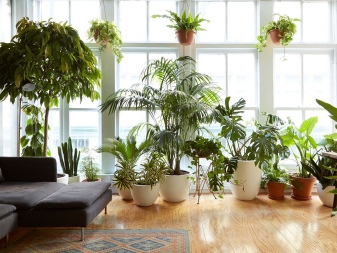
Best views
Nature has created many large-sized plants, and many of them are adapted for breeding in homes. Let us dwell in more detail on the most common types in home floriculture.
Traditional
Many people love traditional cultures, because they look great in classic interiors.
Ficus
These are the constant "regulars" of spacious rooms. In fact, the ficus has quite a few varieties. However, if we talk about large types, then we will talk about the rubbery variety, which is better known as "grandmother's ficus". This is a spectacular ornamental plant, which is characterized by unpretentiousness to the substrate, lighting and subtleties of care. Ficus easily tolerates dry air, while growing quite quickly.
In the last decade, Benjamin's ficus has been very popular. This stylish office plant with small variegated leaves looks very decorative and is considered a real decoration of any modern interior. But this ficus is much more capricious than rubbery.
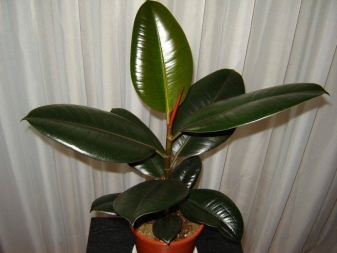
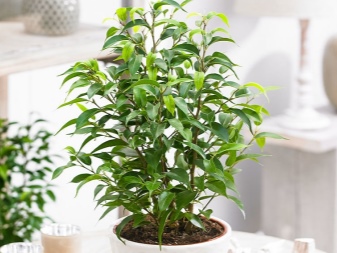
Hibiscus
Another popular large-sized plant, which is familiar to our compatriots under the name "Chinese rose". Historical facts indicate that it was still grown by peasants in their huts. Nowadays, it becomes a luxurious tapeworm, moreover, it blooms abundantly and for a long time. Thanks to the efforts of breeders, many varieties of hibiscus of various colors have been bred.
It is noteworthy that with the help of the correct molding, you can create the most real masterpieces of home gardening from the crown of a Chinese rose.

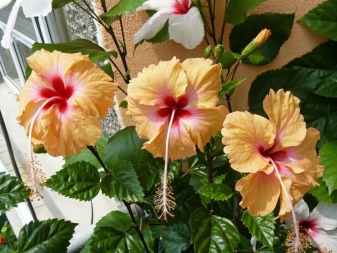
Sansevieria
This plant also has its own household name - "pike tail". Probably, it will seem strange to many that this inhabitant of windowsills fell into the category of large-sized plants, but when comfortable conditions are created, this flower can grow up to 1.5-1.8 m. Usually, several sansevierias are planted in one container at once, and after a couple of years you can get an excellent tapeworm. The composition looks especially stylish if you use variegated varieties.
It is noteworthy that this plant is extremely unpretentious in care. It easily tolerates dry air, prolonged lack of irrigation and poor soil. It grows well both in a shady place and in bright sun.
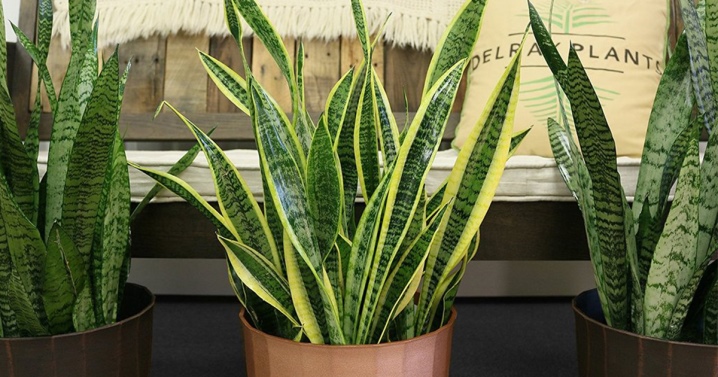
Abutilon
This is a tree-type plant, in everyday life it is called "indoor maple". The main advantage of this green pet is its high growth rate and variety of varieties with pink, yellow and white flowers. It combines spectacular appearance with unpretentiousness.
The only thing the plant is demanding for is the level of lighting. It should be bright, but diffuse.
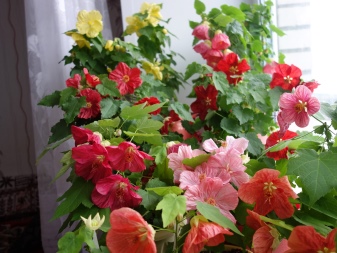
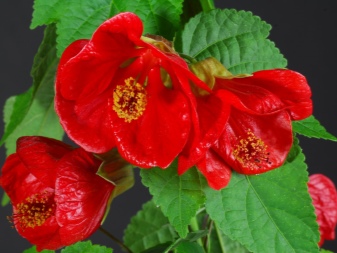
Dieffenbachia
Another representative of indoor flora, known for more than one decade. Refers to variegated large species, the beauty of which leaves no one indifferent. The plant has a high growth rate, and with a comfortable habitat it can reach 3 m. At the same time, the only thing that is required of its owner is to water it regularly.
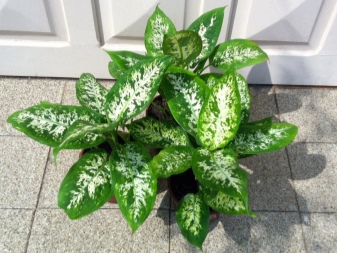
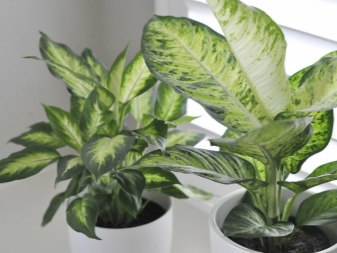
Palm trees
A whole group of domestic plants stands apart, united by the common definition of "palm". Some of them, like the date palm, are also traditional plants. Florists highly appreciate them for the beauty of the openwork crown, unpretentiousness to the conditions of detention and shade tolerance. The only drawback of these pets is their slow growth.
It is best to buy an adult date palm, however, for people who like the process of growing, young plants are quite suitable. The Livingston and Washingtonia varieties can grow to large sizes. However, like date palms, they are slow growing.
If you don't want to wait, then you can always get fast-growing varieties of palm trees: Canary or palm dates, as well as chamedorea. By the way, the latter is capable of blooming very beautifully.
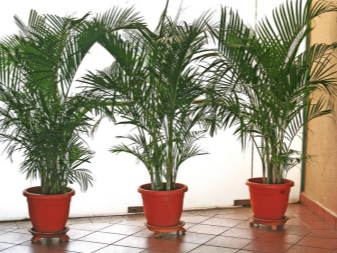
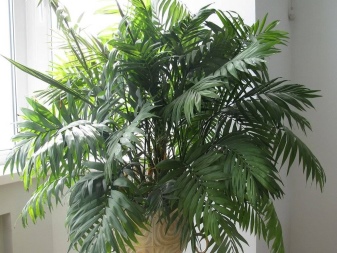
Conifers
Indoor conifers also have many fans.
Norfolk Pine
Of course, this is not a real pine, although it looks exactly like a coniferous plant. In social conditions, such a pine can reach a length of up to 60 m, but in conditions of home cultivation, its length is limited to 2-3 m.
Such a plant has certain requirements for keeping conditions: it must be protected from drafts, while in the summer it is important to maintain a comfortable level of humidity in the room and spray the leaves daily. The ground should always be slightly wet. Best of all, this pine tree grows near a window: there it receives the bright light that it needs for normal growth and development.
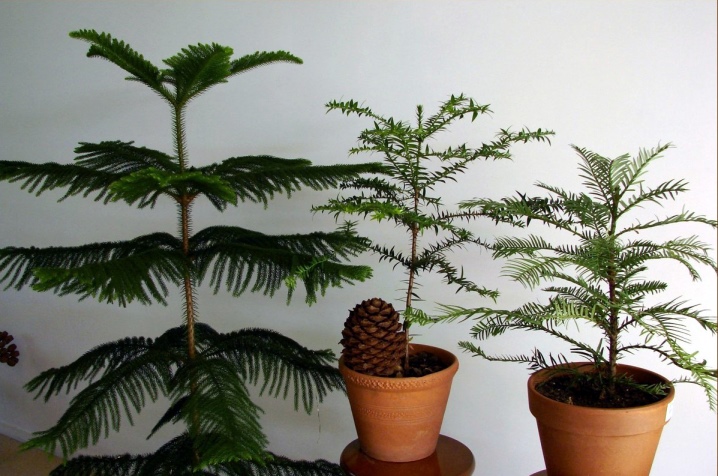
Araucaria
This is a difficult shade-loving flower that requires a cool winter, so it is best to place it in poorly heated rooms (in the corridor or large halls).
The culture grows very slowly, but is still popular for its spectacular appearance and the ability to release beneficial phytoncides into the air.
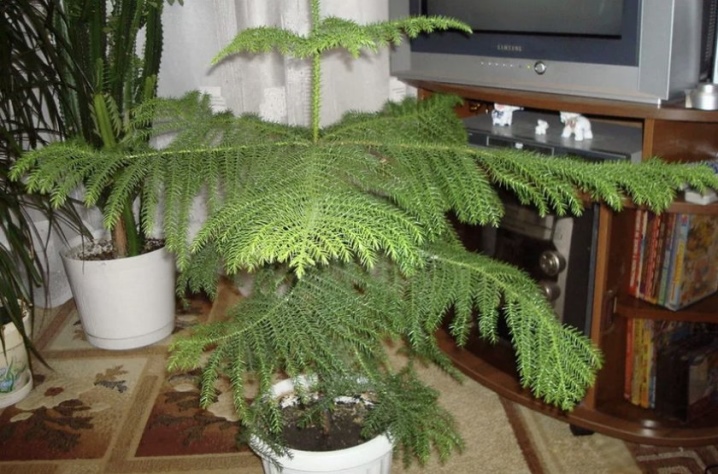
Cypress
This plant cannot be classified as very large, so it is usually grown on a large stand. Cypress looks beautiful and at the same time fills the house with a pleasant aroma.
Requires bright light and cool microclimate in winter.
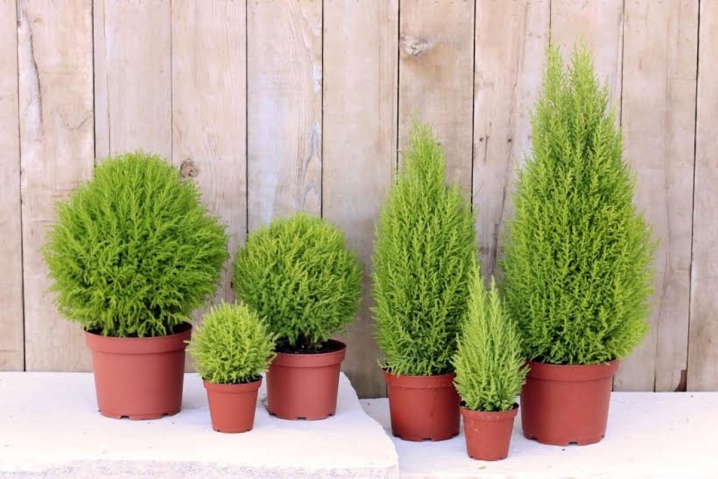
Vines
There are many climbing indoor plants that can reach quite impressive dimensions.
Monstera
One of the most popular indoor vines. The monstera grows very quickly, it is unpretentious in care, and its large leaves can reach 1 m. Depending on the growing conditions, it can crawl both up and sideways - the main thing is that there is a reliable support.
Monstera is most often used for decorating public premises; it is not particularly popular in indoor floriculture. This is due to existing prejudices and myths indicating the danger of keeping such a flower in the house. Monstera has a tendency to release aerial roots, so it needs a fairly large pot.
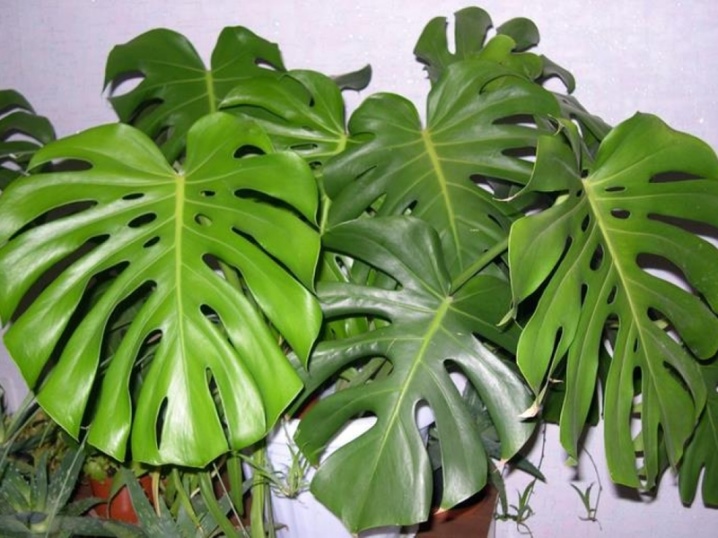
Hoya
This is a wax ivy that has been grown in our homes for decades. The plant has a rather juicy foliage of thick green color, it can also bloom with fragrant flowers. Hoya grows rather slowly; to maintain development, it needs an abundance of light.
But this plant does not tolerate permutations.
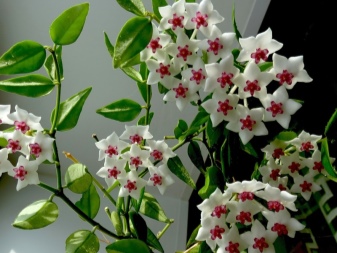
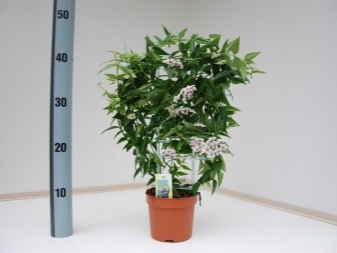
Cissus
This subspecies is also called "home grapes". Unlike hoya, it can literally grow before our eyes. In the interior, it is relevant for decorating a lush green corner, but this is a non-flowering plant. In care it is absolutely unpretentious.
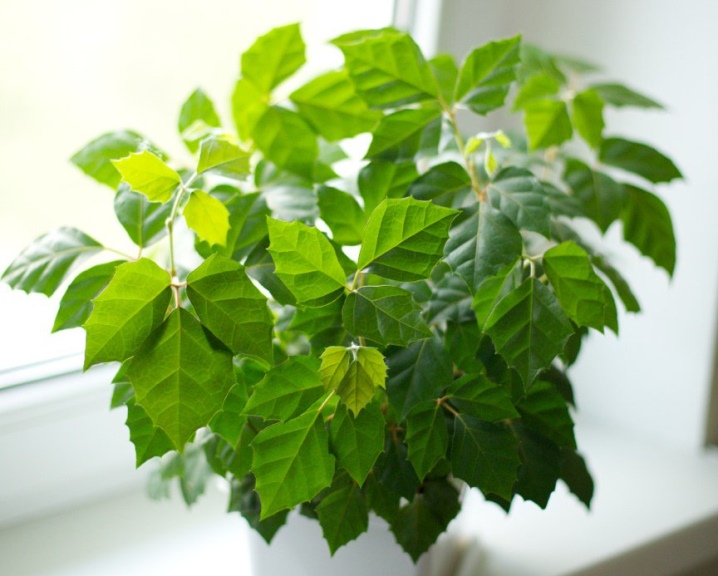
Fancy
Among the largest home flowers, there are species that are rarely used in indoor landscaping, and are completely in vain.
Euphorbia
This is a common spurge, which belongs to the category of succulents. It grows slowly, but after a few years it reaches 1.5-2 m in length. The stems are triangular; bunches of elongated long leaves of a bright green color grow at the ends. The plant tends to grow only upward, almost does not grow in width, so it takes up little space, but it looks invariably elegant.
Important: milkweed juice is poisonous, so you need to keep it in a safe place where it will be inaccessible to children and pets.
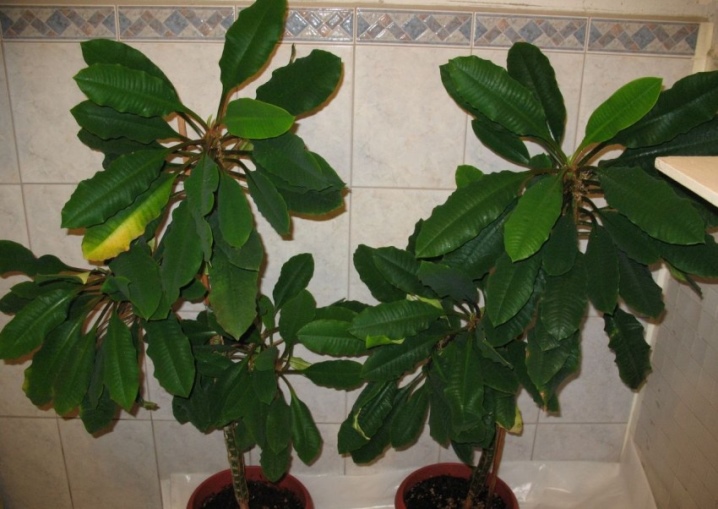
Prickly pear
One of the largest home cacti, it looks very impressive and at the same time has the ability to bloom. Differs in high growth rate and extreme unpretentiousness. However, you should not keep such a pet in apartments where pets and small children live.

Nolina
Became known as the "elephant's foot". It grows up to 2 m in height, is characterized by a thickening of the trunk in the lower part, narrow leaves are located on top. He prefers bright places, looks so unconventional that he invariably attracts the attention of others.
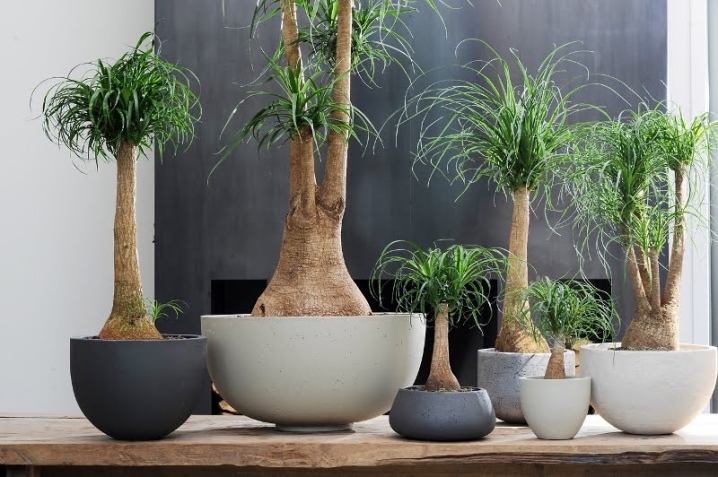
Myrtle
Quite a rare plant that most often grows on a windowsill. When creating a comfortable living environment, it grows up to 1.5 m. It rarely blooms at home, but even without this, its crown looks truly luxurious. It can be easily formed. In the main crown, they give a round spherical shape, and the plant itself is grown on a high stand. Myrtle exudes a pleasant resinous aroma.
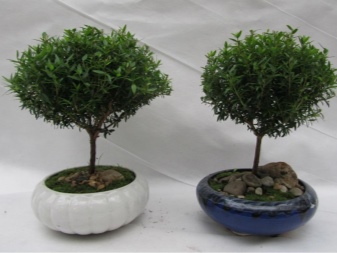
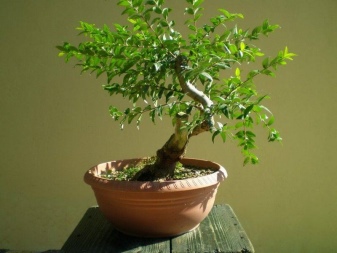
Which to choose?
When purchasing a large houseplant, you need to take into account several factors, and the first of them is the complexity of care. It is important to evaluate how hardy the plant is in habitat conditions, to find out the requirements for soil, lighting, humidity levels in the room, the need for pruning and frequent watering. Think about your willingness to spend a lot of time and energy working on such a pet.
Find out in advance how quickly the plant you like grows, because many are not ready to wait several years or even decades before it reaches impressive dimensions. If you need the result in the coming months, then it makes sense to purchase fast-growing varieties or an already mature plant.
If you plan to grow two or more crops, then consider their compatibility.
Think about how they will look together and see if they are negatively affecting each other. And, of course, pay attention to the appearance of the plant.
Someone prefer fuchsia, someone loves palm trees, and someone likes classic hibiscus or unusual cypresses. Personal preference should be decisive when choosing a green pet.
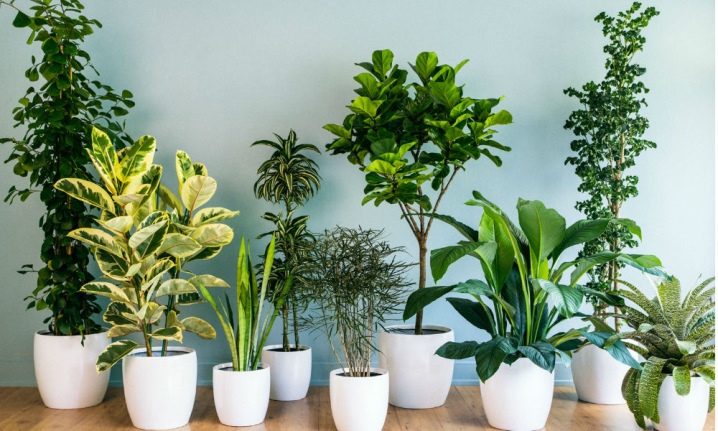
Location features
A large plant is usually placed in the opposite corner from the windows, so it must be shade-tolerant. Otherwise, you will have to arrange additional lighting. Such flowers require obligatory supports and fasteners.
Thinking over the placement of a large flower, everyone will have to be a little designer: you need to understand whether you will be placing the pots on the floor or if you need a stand. Please note that in both cases, the container and the stand will become a noticeable piece of the interior, so their design should correspond to the general style of the room. They should not only look good with the flower itself, but also have a decorative design. There are situations when a pot for a large-sized plant decorates the house no less than its green inhabitant.
Please note that if the plant is already acquired by an adult, then it will take a long time to get used to its new conditions of existence. It is desirable that the flower be in the place designated for it all its life.
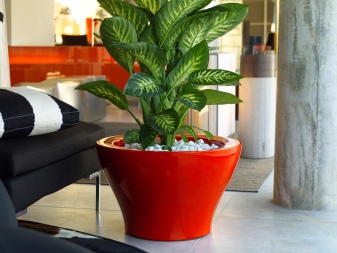
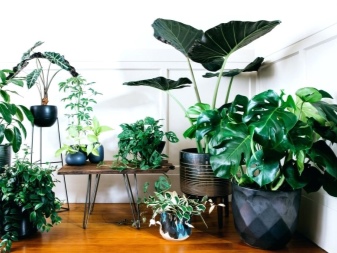
Top 10 most popular large indoor flowers in the video below.































The comment was sent successfully.